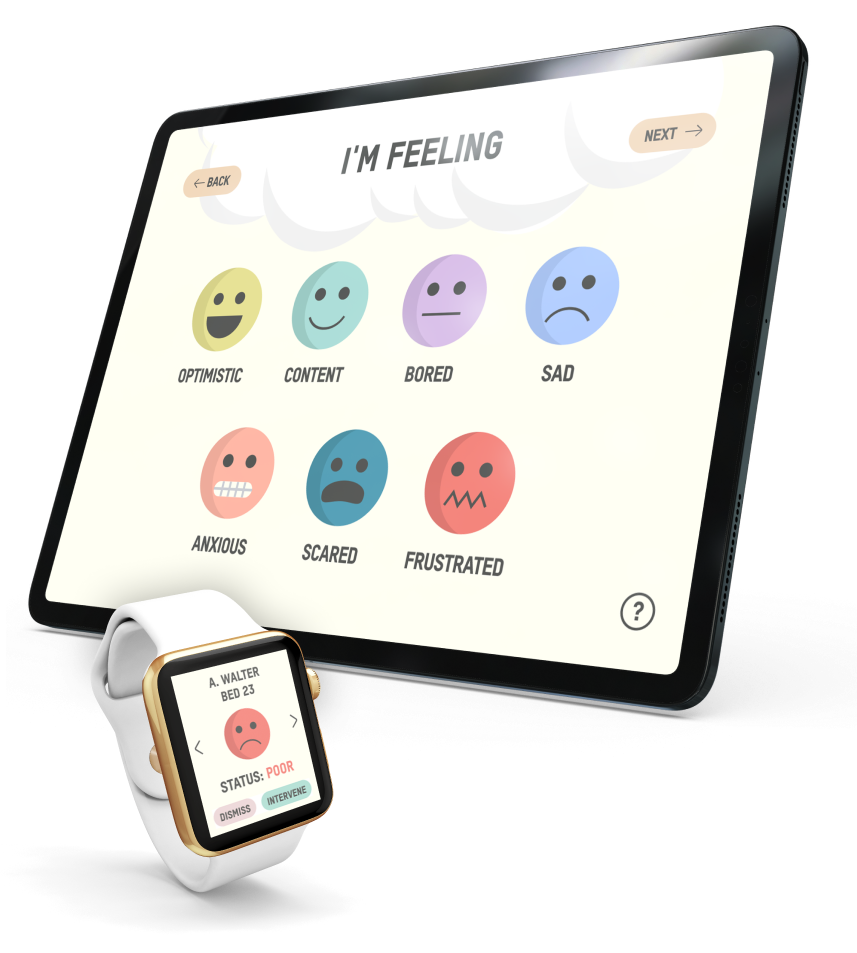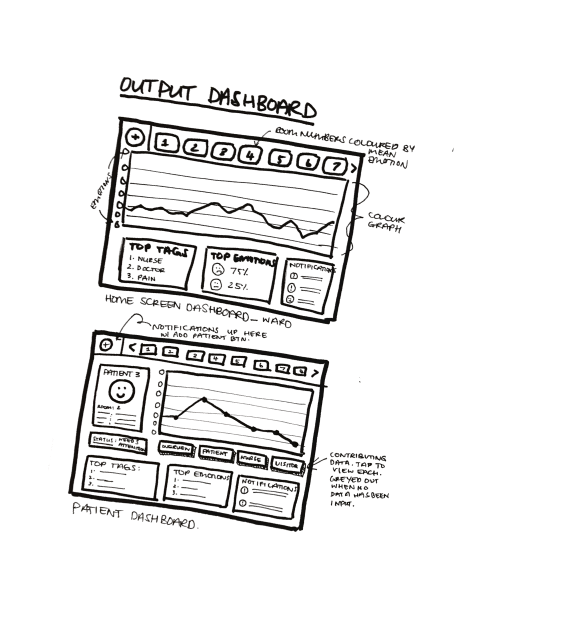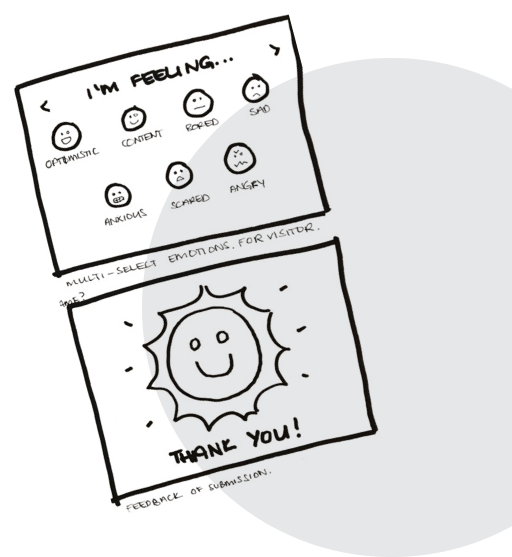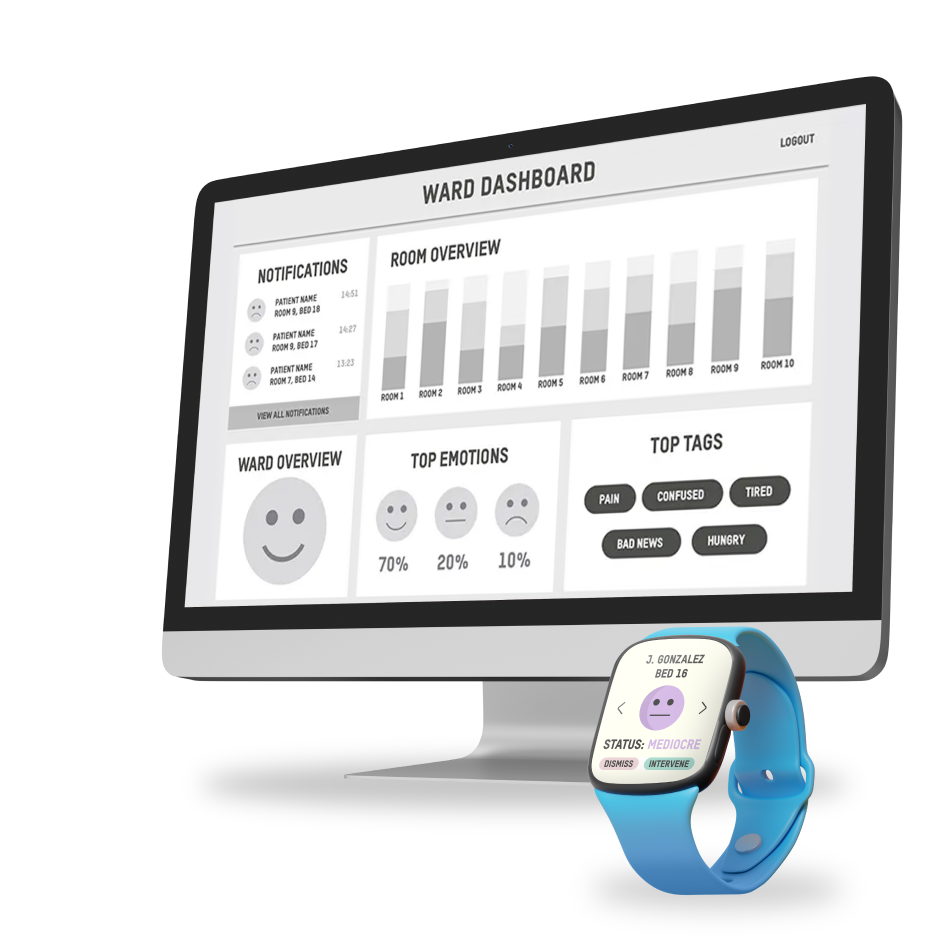
Medtronic
Tigerspike, now known as Concentrix Catalyst, received an exciting brief from Medtronic, a global leader in medical technology, to conduct thorough research and present a product proposal aimed at tracking the emotional well-being of patients during their hospital stay. The overarching objective was to develop a solution capable of capturing real-time data for immediate intervention, uncovering correlations between patient experience and readmission rates. Additionally, the product sought to identify both positive and negative aspects of the current hospital environment, with the ultimate goal of enhancing hospital processes to create more positive and successful patient experiences. This ambitious undertaking represented a remarkable opportunity to combine cutting-edge technology with compassionate care, fostering a paradigm shift in healthcare and improving patient outcomes.





the research
The research phase emerged as the crucial and extensive cornerstone of the project. To develop a new product for tracking emotional well-being, in-depth research was conducted on the hospital landscape, patient journeys, and assumed users to gain insights into needs, goals, and pain points. This involved understanding how, who, and when data would be collected. Utilizing a diverse range of research methods and sources such as contextual inquiry, user interviews, comparative analysis, current technology, patient experience reports, and medical journals, a comprehensive understanding was achieved.
Emotional psychologists and theorists, including Robert Plutchik, Paul Ekman, and W. Gerrod Parrott, were instrumental in exploring basic human emotions, ultimately informing the final emotion choices for the product.

Preliminary research revealed that a patient's hospital experience is a complex interplay of active and passive emotional triggers, influenced by personality, mental and physical well-being, medication, and interactions within the hospital environment. The patient's emotional vulnerability fluctuates throughout their illness and recovery, with human interactions significantly impacting their happiness.
Based on these findings, various patient journeys were identified, distinguishing day stay, overnight stay, and long-term stay scenarios. Assumed users, such as doctors, were excluded from solution generation, while new users, like two types of nurses, were discovered. This culminated in the creation of four key personas, with long-term stay patients emerging as the most valuable and data-rich target for MVP development. This research-driven approach laid the foundation for a product that truly understands and addresses the emotional well-being of patients, driving positive experiences and improved outcomes within the hospital setting and beyond.















































the product
Following the testing of two initial concepts—one illustrative and one interactive—the illustrative concept received resounding acclaim, with 100% of users expressing a preference for it. Building upon this success, the concept underwent two more ideation iterations following extensive usability testing, leading to the final proposed solution.
The product solution consisted of a front-end input iPad app, enabling patients to record their emotional state and well-being. Simultaneously, the back-end output relies on two devices: an Apple Watch delivers direct and instant notifications to the head nurse of the ward (NUM) when a patient requires attention due to feeling unwell or emotionally negative. Moreover, a Web App dashboard offers a comprehensive view of the aggregated data for the NUM and other medical staff to review.
By leveraging this proposed solution, healthcare professionals gain real-time insights into patients' emotional well-being, allowing for prompt intervention and improved care delivery. The combination of the intuitive front-end app and the streamlined data management system fosters a holistic approach to enhancing patient experiences within the hospital environment.







the input
To ensure a comprehensive understanding of a patient's overall emotional well-being, the product incorporates various sources of input data. These include three user inputs from patients, visitors, and nurses, as well as an objective data source—an emotion facial recognition API—serving as a baseline.
The intuitive input app empowers users with the ability to:
- Select multiple emotions to accurately depict their feelings.
- Scale the intensity of the emotions, providing a nuanced representation of their emotional state.
- Add reasons for their emotions, offering valuable context to the recorded feelings.
- Include detailed comments, enabling patients, visitors, and nurses to express themselves freely.
- For patients, the app features facial recognition technology to detect emotions, enhancing the accuracy of data collection and offering an added layer of insight.
By incorporating a diverse range of input sources, the product can paint a holistic picture of a patient's emotional journey throughout their hospital stay. This multi-faceted approach fosters more accurate and personalized care, empowering healthcare professionals to respond promptly and empathetically to patients' emotional needs. Ultimately, this comprehensive understanding of emotional well-being contributes to the creation of a more compassionate and supportive hospital environment.
The output
The output dashboard is a valuable tool, offering nursing staff and ward clerks a clear and concise overview of both the ward's emotional state and individual patient well-being. For NUMs and hospital executives, it provides in-depth insights into patient experiences, including reasons and comments provided. The dashboard also presents historical data, allowing for trend mapping and comparison of readmission rates with a patient's emotional well-being during previous visits.
To achieve this data-driven approach, the system employs a sophisticated algorithm for synthesizing the input data and determining overall patient well-being. Each emotion is given specific weights, streamlining the data into a user-friendly three-tiered scale of good, neutral, or poor. Furthermore, specific reasons or comments provided during input that necessitate intervention are automatically flagged, triggering a "poor" notification to hospital staff.
This comprehensive and insightful dashboard equips medical professionals with the necessary tools to provide personalized and timely care, ensuring patients' emotional well-being is always a top priority. With its ability to identify patterns and correlations, the system empowers healthcare providers to make informed decisions, fostering improved patient experiences and ultimately enhancing overall hospital processes.
the user interface
The strategic use of color holds immense importance in guiding user interactions with UI elements while eliciting emotional responses and linking mental associations with tangible objects and intangible feelings. Our color palette selection was thoughtfully informed by extensive research and color psychology theory. By incorporating soothing pastel tones, we aimed to evoke a sense of tranquility and create a welcoming and friendly atmosphere for users.
In addition to color, the typeface T-Star PRO was chosen with great consideration. Its plain and technical style exudes a sense of simplicity, while the openness of the lettering contributes to a warm and inviting feel. Moreover, the crisp legibility of T-Star PRO was a key factor in catering to older patients, ensuring a seamless and comfortable reading experience for all users.
Together, our thoughtfully chosen color palette and typeface create a harmonious and user-friendly interface, fostering a positive emotional connection with the product and promoting ease of use for patients and medical staff alike.

©2024 Edwina McGregor